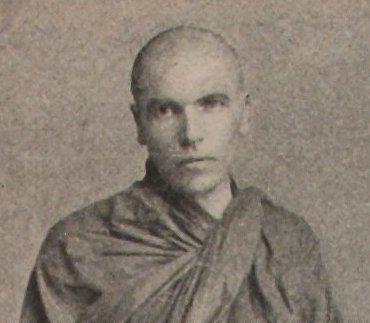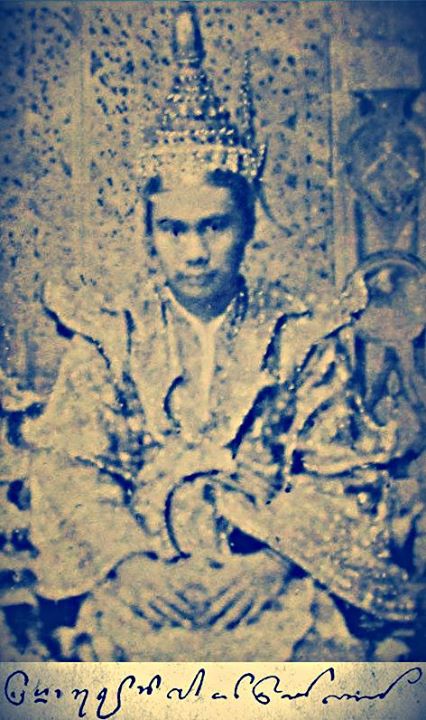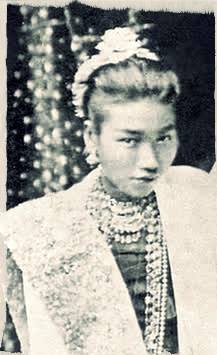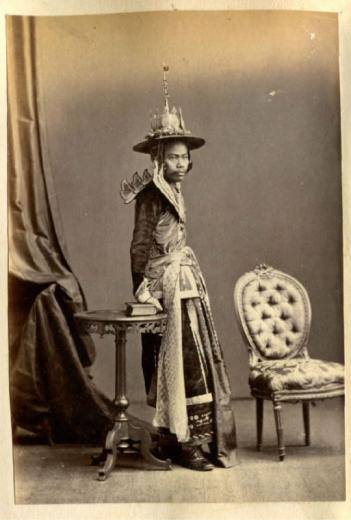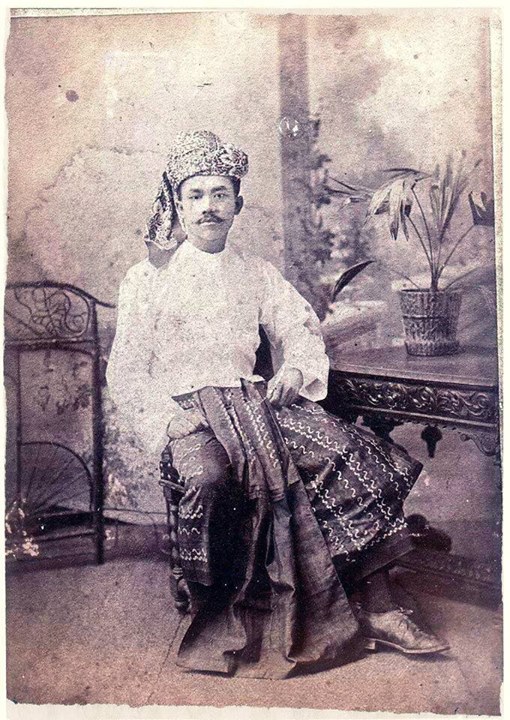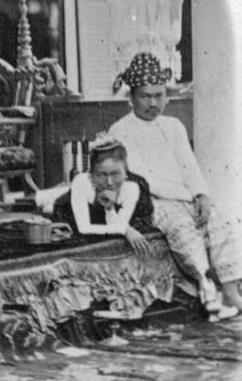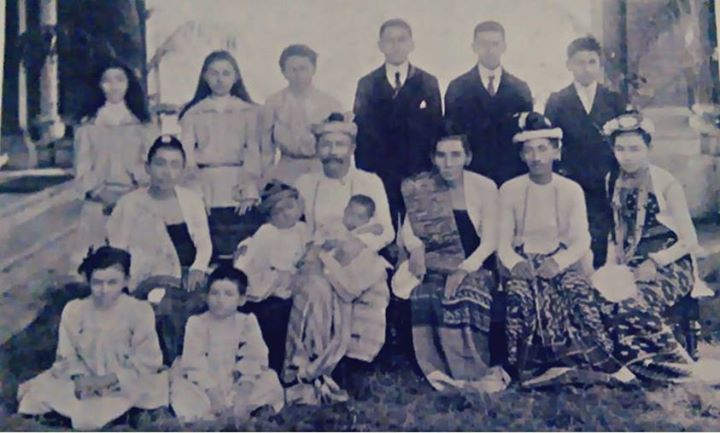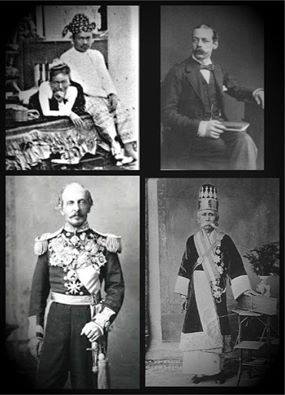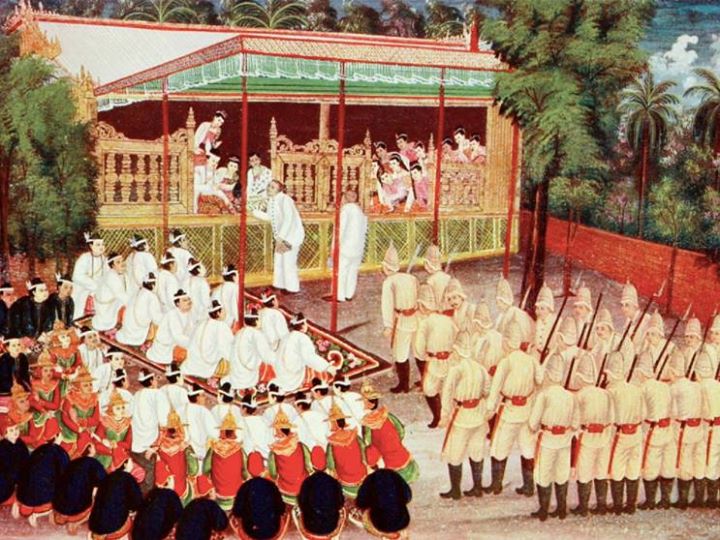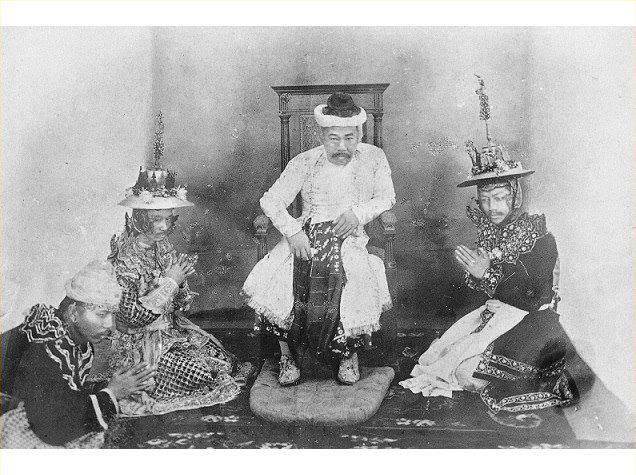King Thibaw
Irish monk of Myanmar
There is a the long and colourful history of relations between Myanmar and Ireland and the many Irish men and women that have played a role in Burmese affairs. Perhaps one of the most unusual was U Dhammaloka (whose original name is unknown for certain). Born to a poor family in Dublin in 1856, he migrated to the United States, made his way on the first trains, then travelled by steamship to Japan and finally ended up in Rangoon just...
Read MoreKing Thibaw: the Last King of Burma
King Thibaw (1 January 1859-19 December 1916) was the last king of Burma. He was the 41st son of King Mindon and the Laungshe Queen, and the 11th king of the Konbaung dynasty with the regal title Thiri Pawara Ditya Lanka Wizara Nanda Yatha Tilawkadhipati Pandita Maha Dhamma Razadhiraza. He assumed the throne in October 1878, was deposed by the British in November 1885 and died in exile on 19 December 1916 at the age of 57. A controversial choice...
Read MoreHM Queen Supayalat, the Last Queen of Burma
HM Queen Supayalat (13 December 1859-24 November 1925) became the "Middle Palace Queen" of King Thibaw in 1916 at the age of 19. During her seven years on the throne she fought attempts by reformist ministers to curtail royal authority (especially royal spending). She also fought to limit the number of queens and royal concubines. British propaganda portrayed her as a decadent tyrant, dominating her husband and opposed to all change. Negative images of the king and queen were usually...
Read MoreThangyet Wun U Myu
This is a rare portrait of the Thangyet Wun U Myu (later styled Mingyi Minhla Maha Sithu Kyaw), a scion of an old family of Ava nobility and was one of the first Burmese to be educated in Paris. He obtained a degree in engineering at the École Centrale des Arts et Manufactures in 1868 and later returned for further study in France in the 1870s. U Myu cheld different posts in Mandalay, leading King Mindon's efforts to build the...
Read MoreThe man who would be king – Prince of Pyinmana
The Prince of Pyinmana who had been a candidate for the throne in 1878 and was considered by the Japanese as a possible new "king of Burma" in 1942. He was born in 1872 and was the son of then King Mindon and a half-brother of King Thibaw. Educated at St Marks School, Mandalay, and at Dehra Doon, he was last surviving child of King Mindon and lived until 1963, the year NASA launched its first television satellite and the...
Read MoreThe vision of King Thibaw’s government
This is a rare early photograph of King Thibaw and Queen Supayalat. The government of King Thibaw came to power in November 1878. Contrary to popular views, it was a highly reformist government at first, led by men such as the Kinwun Mingyi and the Yaw Atwinwun, as well as several who had returned from studies in Europe. They were eager to modernize, reach out to the West, and preserve Burma's independence, but their ambitious plans for political and economic...
Read MoreThe Prince of Limbin and family, at Limbin House in Allahabad c. 1910
The Limbin Prince was a minor son of King Mindon's half brother the Kanaung Prince and a cousin of King Thibaw. He escaped the arrest and execution of many other royal princes in 1879 and from 1885-7 led a widespread resistance together with several Shan Saophas against the British occupation. He was exiled in 1887 first to Calcutta and then Allahabad, returning to Rangoon in 1911. He died in 1933 and was survived by four sons and six daughters. The...
Read MoreThe ultimatum that led to war
On 22 October 1885 Lord Dufferin the Viceroy of India issued an ultimatum calling on the government of King Thibaw to place its foreign relations under the permanent control of the British Indian Empire. The formal aim of the ultimatum was a resolution of the dispute with the Bombay-Burmah Trading Company but the real intent was to permanently end Burmese sovereignty. The British were increasingly worried about prospect of closer Franco-Burmese relations and attracted to the idea of Burma as...
Read MoreAfter the Burmese Kingdom fell into British Hands
From 1883-85, the reformists around the king, led by the Kinwun Mingyi, the Yaw Atwinwun, and the Wetmasut Wundauk, were unable to implement the sweeping changes they felt necessary to save the kingdom. Conservatives, supported by factions within the army and the royal establishment, had pushed back and halted many of the constitutional and fiscal reforms originally set in motion. Fast mounting external and domestic challenges, compounded by worsening economic conditions, fighting in the Kachin Hills, two successive years of...
Read MoreThe last known photograph of King Thibaw
The last known photograph of King Thibaw of Burma, taken on 5 March 1914 during the "natwin-mingala" of his daughters, the four princesses, at Ratnagiri. Several dozen entertainers as well as ponna, court officials and ex-ministers including the Wetmasuk Wundauk were allowed to travel from Mandalay to attend the ceremony. The former king was already in poor health and died less than two years later, aged 57. If he had been alive at independence in 1948 he would have been...
Read More